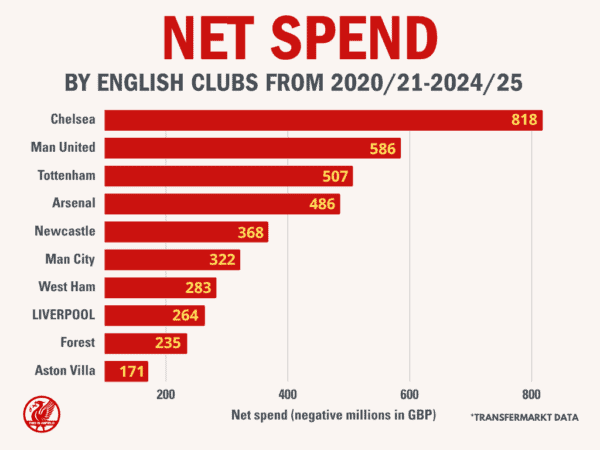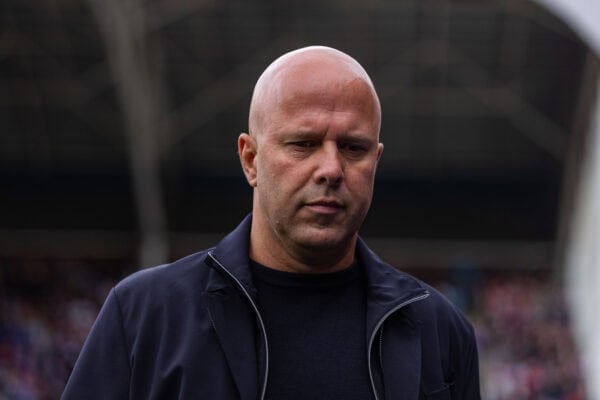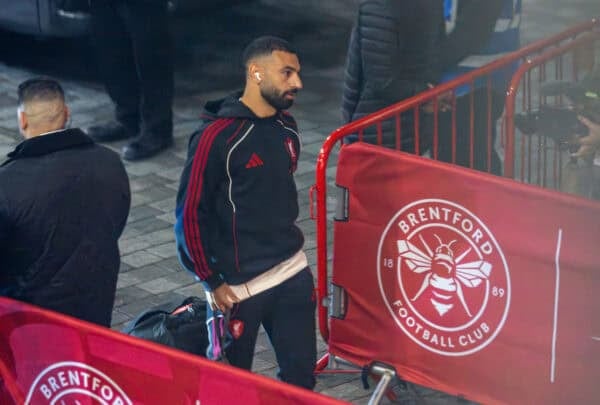Liverpool have spent almost £300 million on transfers this summer and remain in the discussion for a nine-figure sum for Alexander Isak, all comfortably within the remit of the financial rules.
‘The Reds have got no money but we’ll still win the league’ will be ironically sung at Anfield and beyond next season after the flexing of financial muscles throughout the summer.
Including add-ons, Liverpool have already spent £264.5 million on Florian Wirtz (£116m), Hugo Ekitike (£79m), Jeremie Frimpong (£29.5m) and Milos Kerkez (£40m).
In addition to that, Giorgi Mamardashvili‘s arrival for £30 million has been completed, plus Armin Pecsi‘s signing for £1.5 million – and there is still more business to be done.
Isak has told Newcastle of his desire to leave and will command in excess of £120 million, likely closer to £150 million, while Marc Guehi is also of interest at centre-back.
It would be a significant outlay, but football finance expert Kieran Maguire says Liverpool can spend another £200 million and still be compliant within financial regulations.
So, with Liverpool spending at will and armed with further funds, the biggest question for rival supporters is how are they capable of doing so?
Liverpool ‘have kept their power dry’

The Premier League‘s Profitability and Sustainability Rules (PSR) have dominated discussion this summer as clubs balance the need for signings while operating within the rules.
Essentially, clubs have to limit their losses over a three-year period and cannot lose more than £105 million in that timeframe – it is designed to help maintain financial stability.
There are allowable deductions, however, for investment in infrastructure, the academy, the women’s team and community initiatives – and a few loopholes of sending players back and forth.
UEFA has its own set of rules, which are known to be stricter than the Premier League‘s, and we have already seen sanctions handed out over the years domestically and in Europe.
Now that has been said, Liverpool have little to no concerns when it comes to breaching PSR as they have spent carefully while sanctioning smart sales for a modest net spend.

From 2020/21 to 2024/25, Liverpool had the eighth-highest transfer net spend in England, according to Transfermarkt, with -£263.55 million – that is £554.85 million less than Chelsea at the top.
For comparison, Chelsea sat top with -£818.4m, with Man United (-£585.67m), Tottenham (-£507.18m), Arsenal (-£485.69m) and Newcastle (-367.94m) making up the top five – Man City, meanwhile, sat sixth (-£322.44m).
Notably, even West Ham (-£283.27m) sat ahead of Liverpool on net spend prior to the Reds splashing the cash this summer, with Nottingham Forest (-£234.67m) not far behind.

Football finance expert Maguire told talkSPORT: “In terms of spending, of the old school big six, Liverpool were sixth over the last three to four years. They’ve been keeping their power dry relative to the other clubs.
“They spent a billion pounds less than Chelsea during that period; they’re actually in a position to spend now because they’ve been quite cautious in the last couple of windows.”
Sky Sports, meanwhile, have relayed research from football finance expert Swiss Ramble, explaining that Liverpool “can lose a further £158 million and still be [PSR] compliant next summer.”
Liverpool’s position comes from only diving into the market when a player is available who instantly improves the squad, and if not, they are content to wait for the right player.
There are no rushed or botched arrivals as we endured in previous years, rather a methodical and analytical approach that prioritises smart recruitment over bowing to outside pressure.
It has, therefore, created significant headroom when it comes to their PSR status and a British record transfer for Isak is well within their capabilities thanks to creating a net positive within the abovementioned PSR allowance.
It is pertinent to mention that any club record fee for the Swede, like every other transfer, would be amortised up to five years and help reduce the immediate impact on their financial accounts.
For example, if Isak was signed for £150 million it would be amortised over five years and in Liverpool’s 2025/26 accounts it would cost £30 million – a fee that could be wiped out with further sales, figures which are represented in full on a balance sheet.
Cashing in on sustained success

Beyond what the club do, or don’t do, in the transfer market there is also the consideration of the money that comes in.
That includes their new shirt sponsorship with Adidas, broadcast revenue, the Anfield expansion – including hospitality growth – winning the Premier League and banking subsequent bonuses from sponsors for that success.
This summer they have also banked pure profit on deals for Trent Alexander-Arnold (£10m), Jarell Quansah (£35m), Caoimhin Kelleher (£18m) and Nat Phillips (£3m) due to their status as academy graduates – which is a huge financial gain.

Further sales of Ben Doak, Harvey Elliott and Tyler Morton will boost that figure, while a departure for Darwin Nunez and Luis Diaz will also help ‘balance’ the books.
And that is just one example of Liverpool’s summer business, a model that yields high returns for squad players and carefully weighs up any sizeable outlays.
It has helped establish a self sustaining model, one not solely dependent on the sale of Philippe Coutinho like some still seek to use as a point of debate.
Liverpool’s wage bill will be hefty, especially with bonuses from their recent success, but their savvy model has enabled them to capitalise when the club is at its strongest position to do so.

CEO Billy Hogan underlined as much to the Athletic, saying: “We also recognise, having won the English league title for the 20th time, that this is one of the biggest clubs in the world.
“We want to make sure that we are behaving like one.”
Liverpool have not happened upon this financial status by chance, but rather with a methodical and long-term approach that has made this summer the time to invest, and invest heavily.
It cannot happen every summer, sadly, but the club’s savvy business in recent years is allowing them to invest in future success with new signings who currently have an average age of 23.1 years.
Isak will demand eye-watering sums, but Liverpool are one of very few clubs who can sign on the dotted line and that is owed to their incredibly impressive financial model.
















Fan Comments